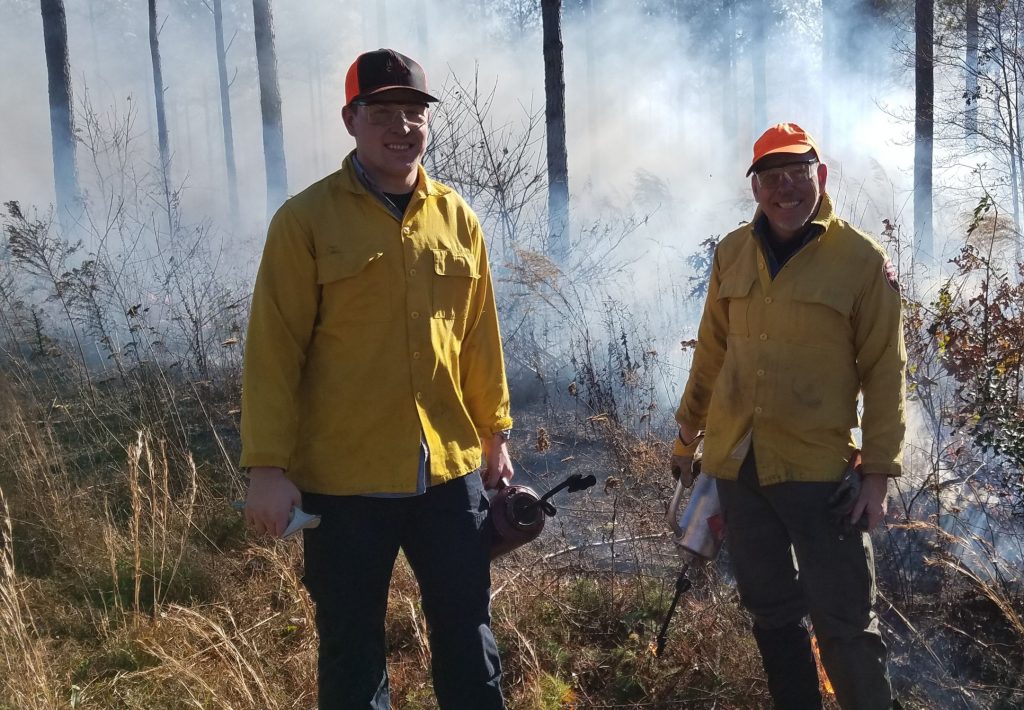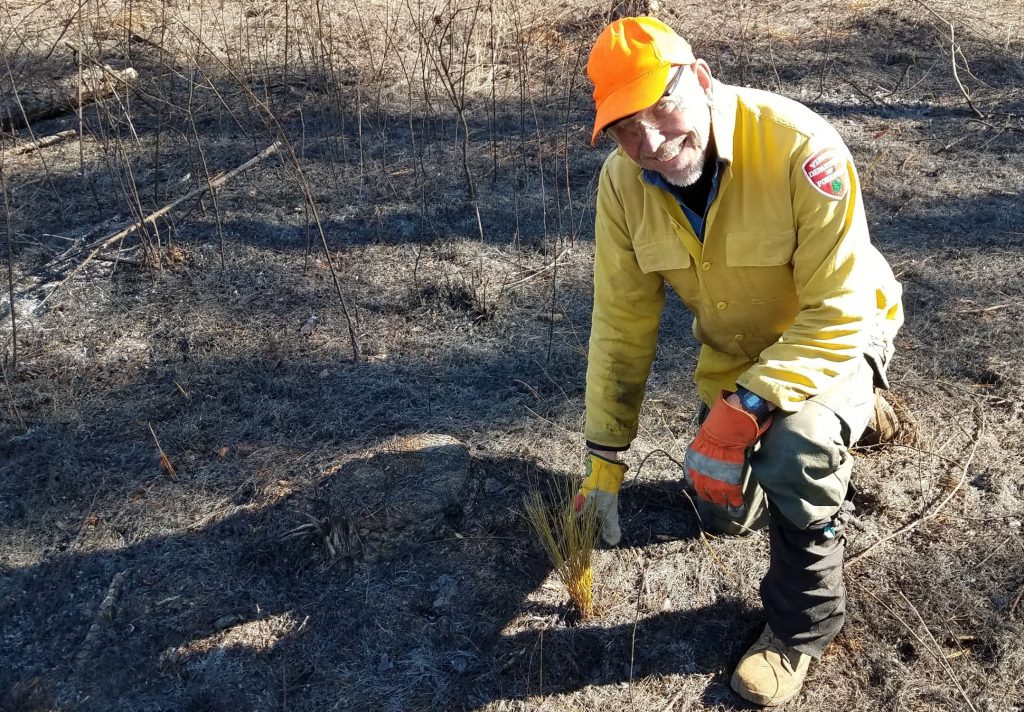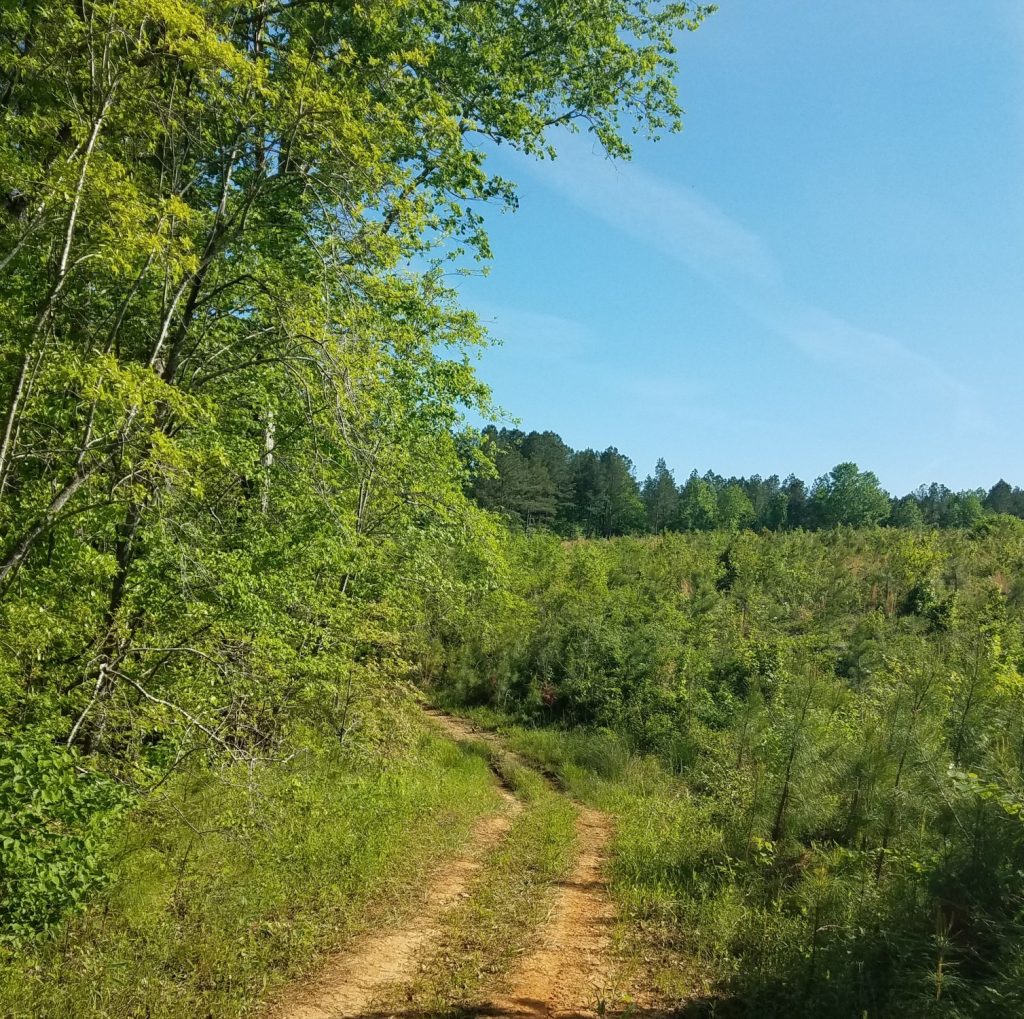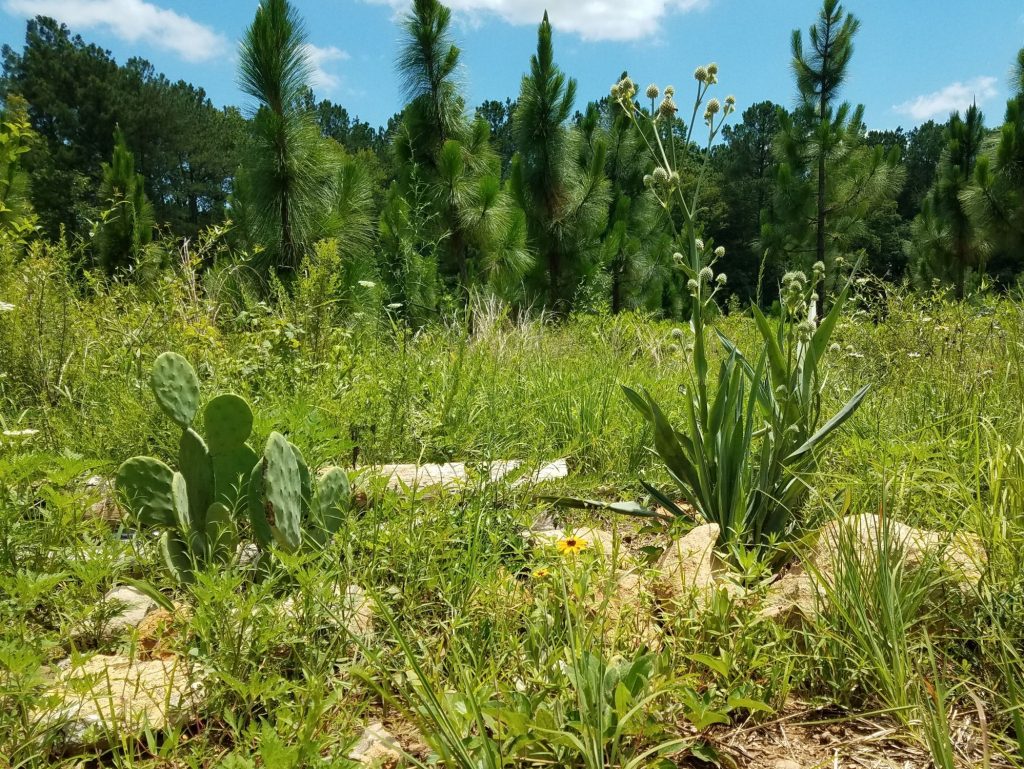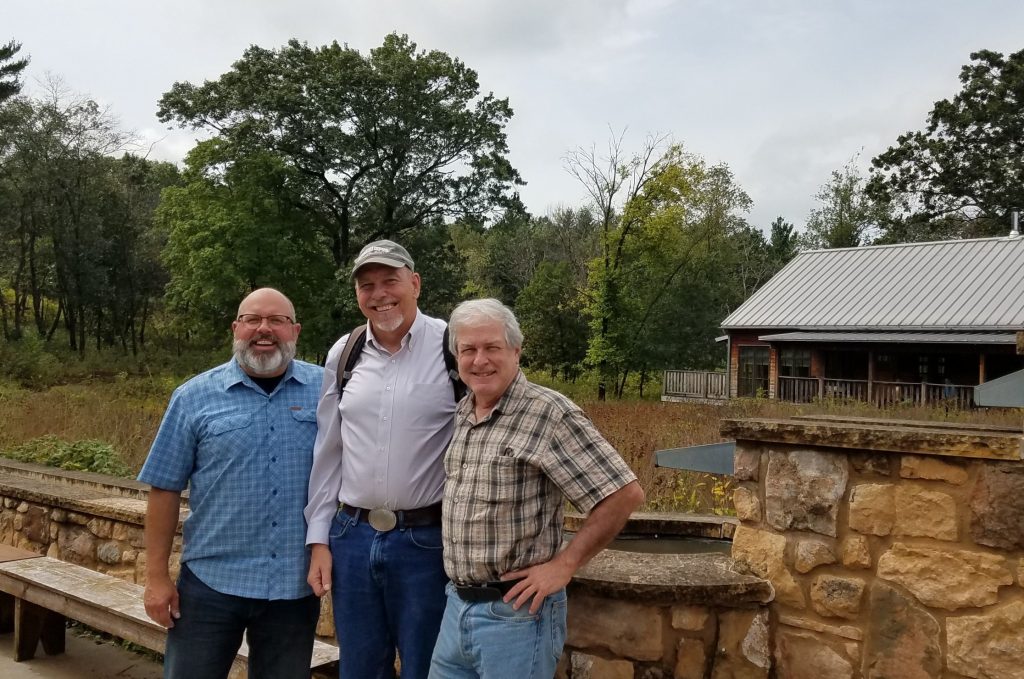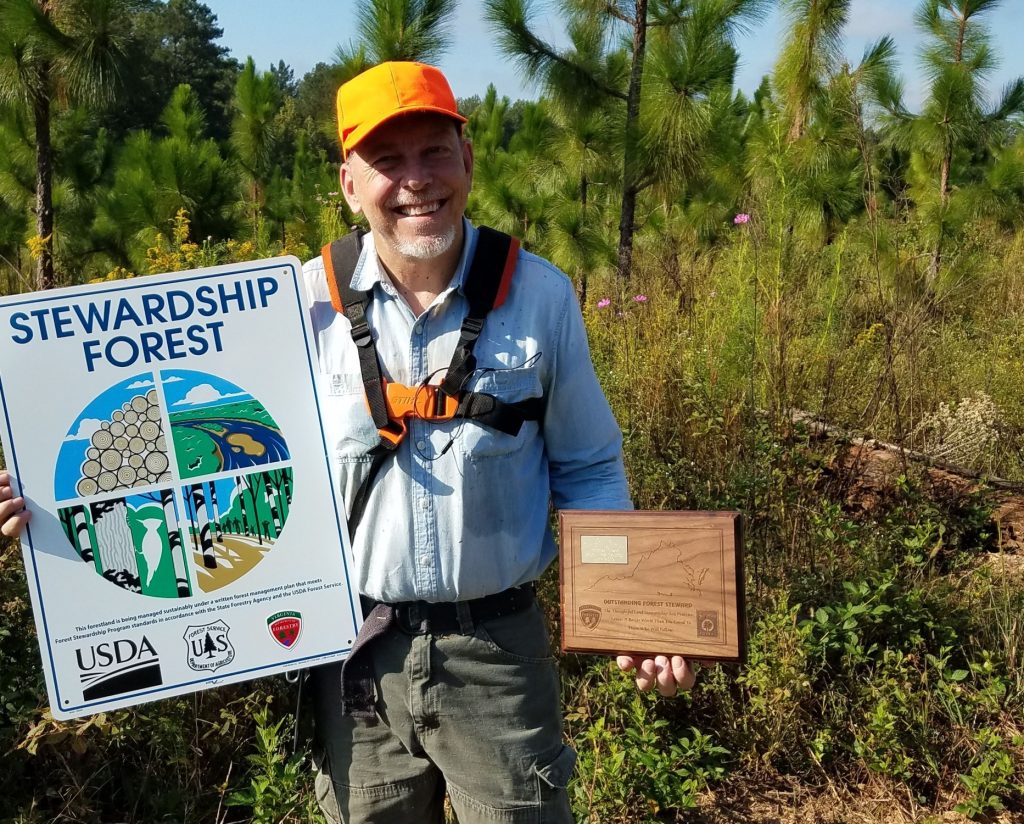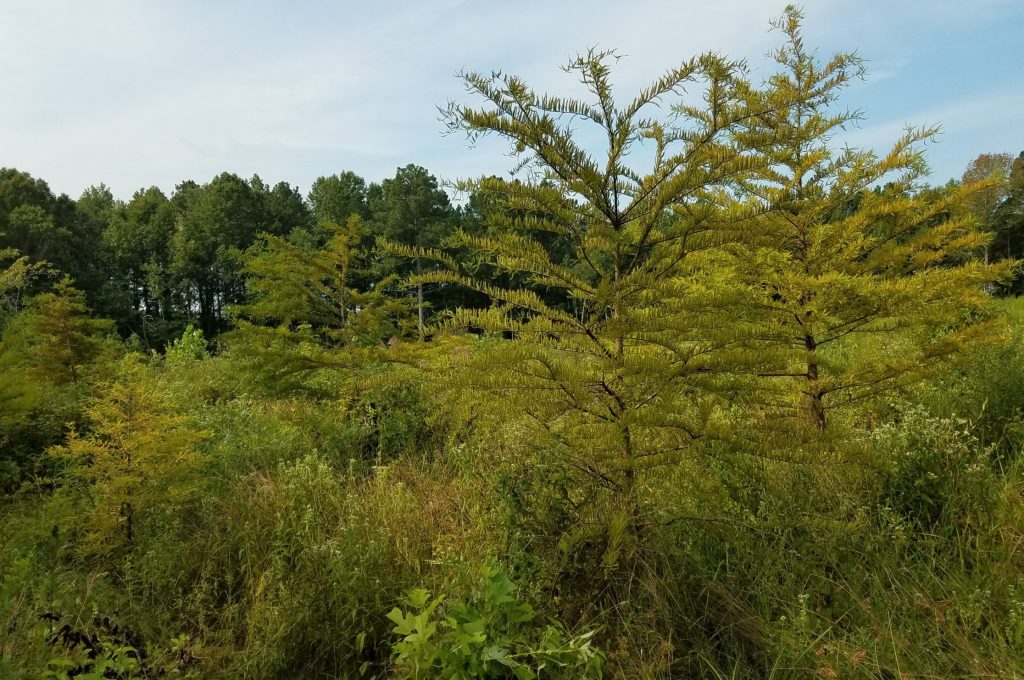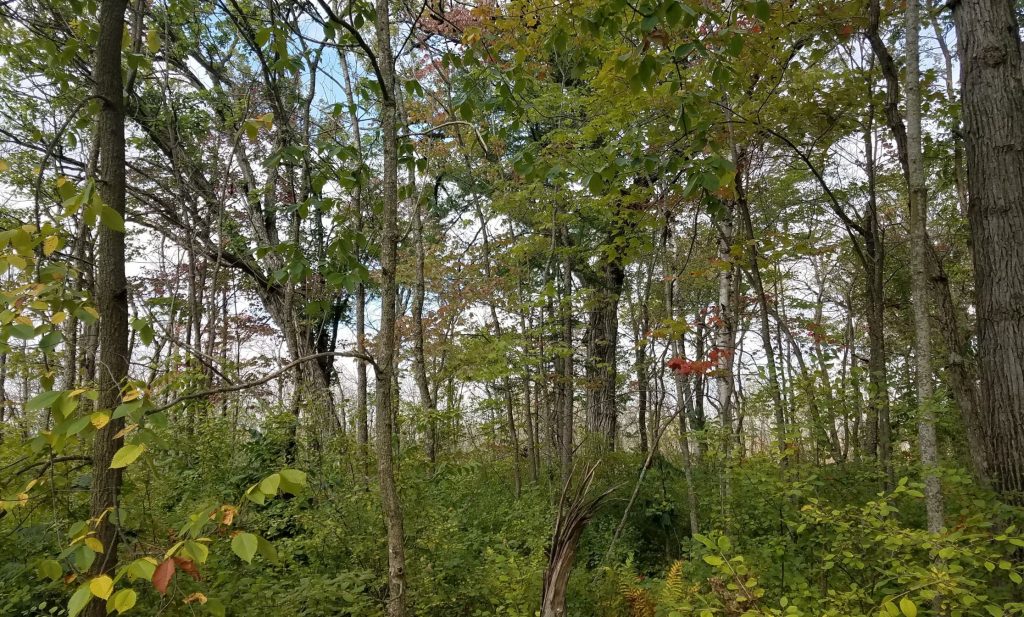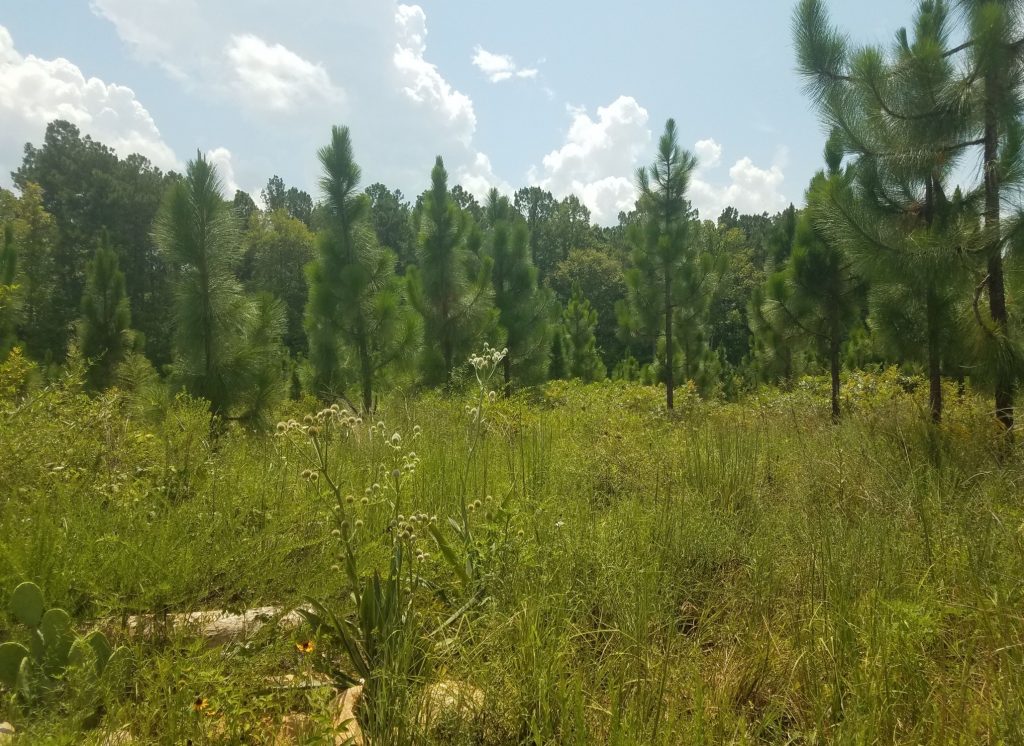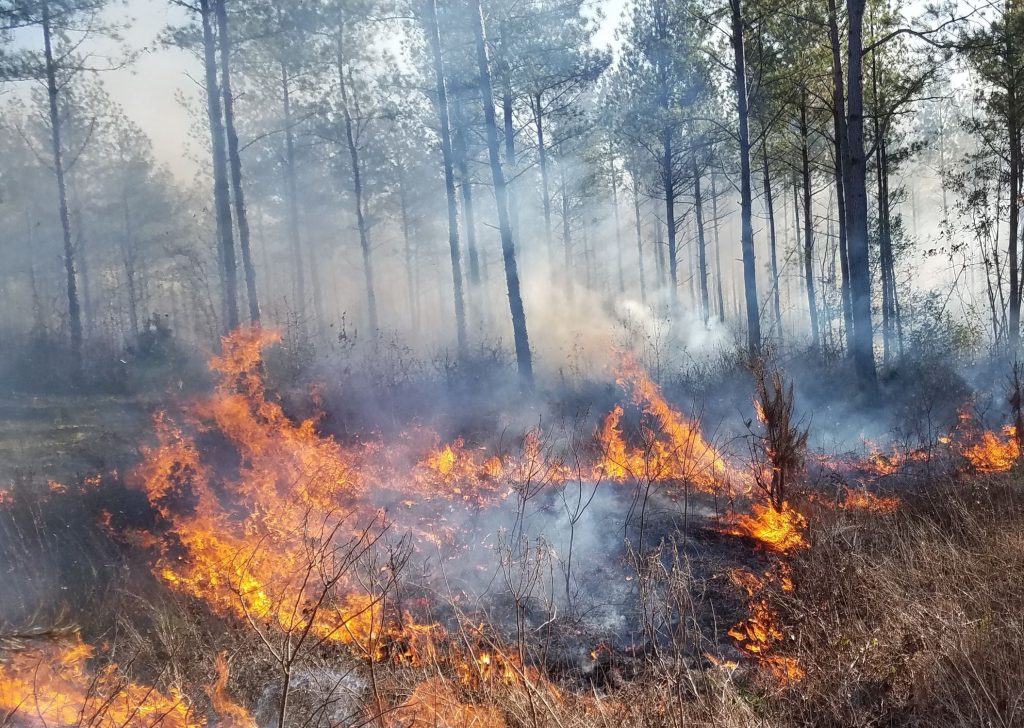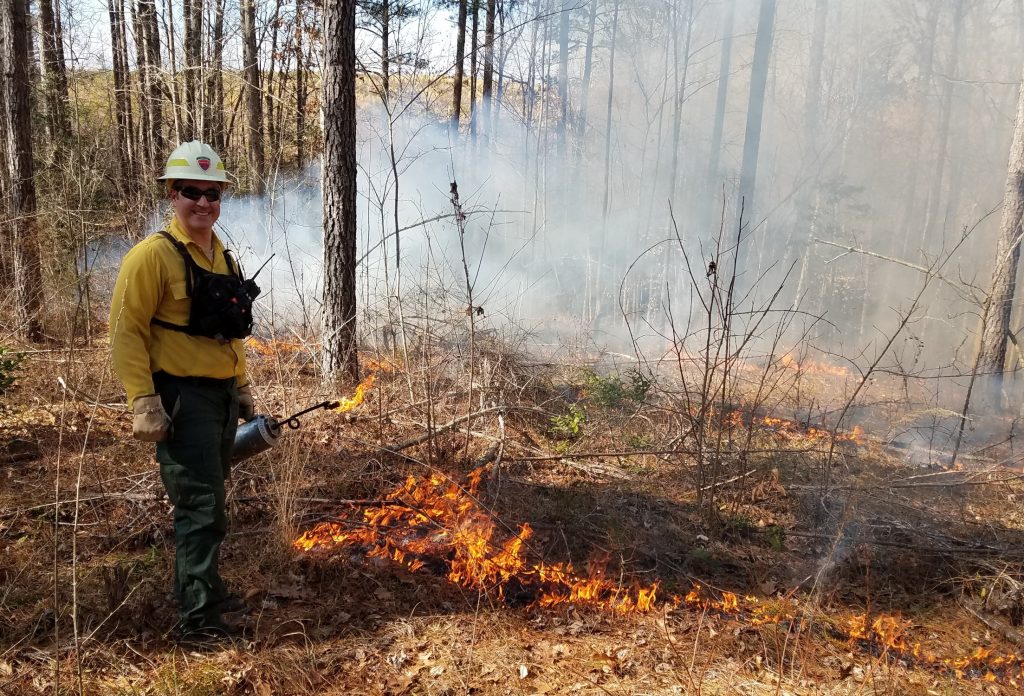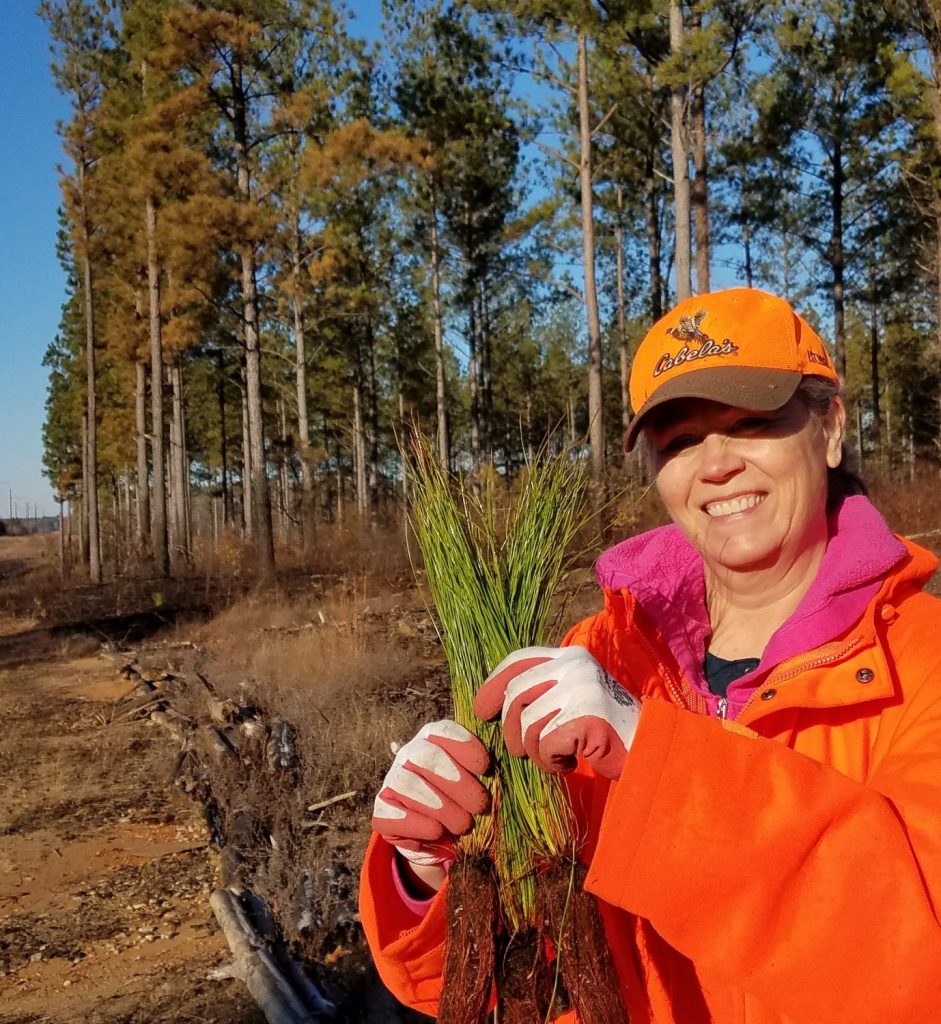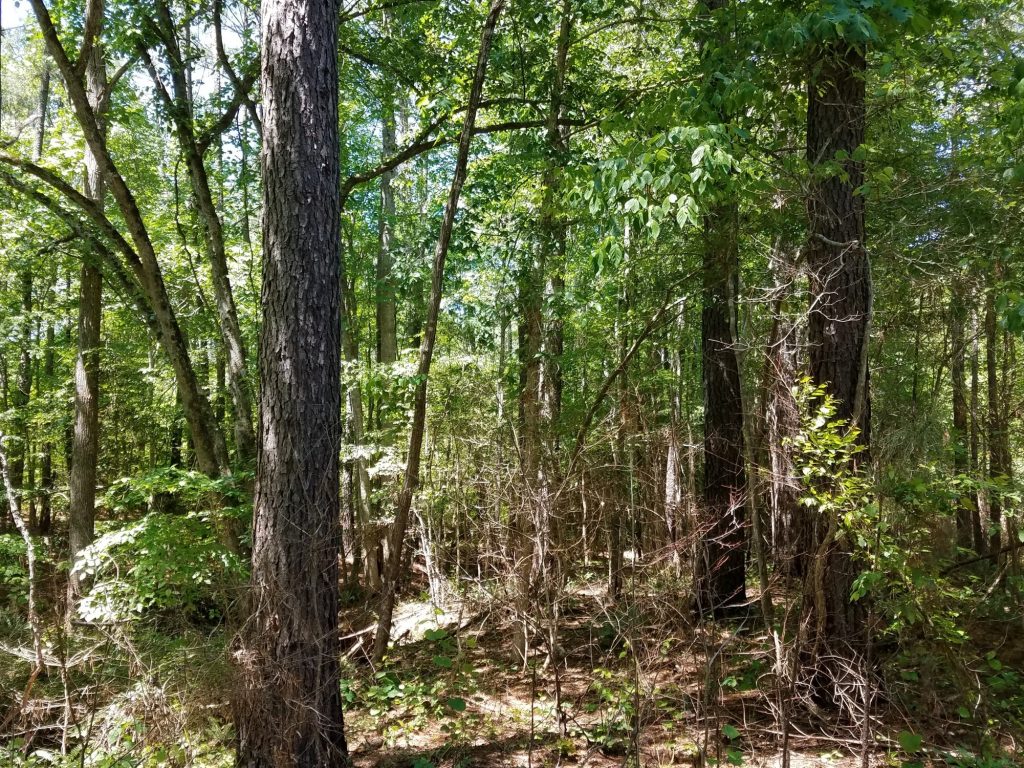Thoughts and experiences from another year in the woods -2019
Guardian or gardener
It just gets better. I have loved forests since before I can remember; this is my fifteenth year of having my own land & having my land, rather than just walking around on others, changed my outlook. Owing land lets me to make choices about the future of the land and it gives me the responsibility to make the right ones AND implement them on the land. It is easy to speculate about what would be good to do; it is another thing to do it. This is a lesson that comes from being responsible for land rather than just looking at it and demanding that others do something.
Preservation and Conservation
I read a book a while back called “Natural Rivals,” a joint life and times biography of Gifford Pinchot and John Muir. The conflict and cooperation of these two giants of environment is taken as the birth of the American environmental movement. The general idea is that Pinchot is the guy advocating wise use. He is the father of conservation. Muir is the spiritual ecologist, who sees transcendental value in nature. His legacy is preservation. Pinchot is identified with forestry and the multiple use National Forests. Muir is identified with National Parks. The two strains overlap in most places, but on the edges, there is serious disagreement about the place on humans in the natural community. The book says that the conflict was not felt as strongly by the men involved than we have subsequently read into it. I agree.
Most of the time, you need not choose and part of the genius of someone like Aldo Leopold was to melt the two together in a concept of land ethic, where you respect the land while regeneratively using some of what the land produces.
I try to live & practice a land ethic and not just read about it but reading about it is still important. I don’t need to rediscover what others have long since known. For example, I read Aldo Leopold’s “Sand Country Almanac” way back in 1972, but it was not until I had my own land that his wise words really made complete sense to me. It is the interaction over time that creates the meaning and the complexity the leads to the joy in serendipity. My study of ecology and forestry lets me make reasonable predictions about what will happen when I take actions. It would not be so much fun if I could predict exactly what would happen or if it was completely beyond me to make changes.
Living a land ethic
Leopold’s “land ethic” is both simple and profound. We all live in the natural world and should be mindful of the choices we make, both actions and inaction. Things we do that tend to improve the biotic communities on the land are good and those that harm them are bad.
The profound and ostensibly paradoxical part is that Leopold wrote that you cannot write a land ethic in a book. A land ethic must be written on the land. You leave your signature on the land you manage, and you learn from the land you are walking on. You learn from being involved. It is a melding of studying, thinking and doing. Together they are better than the sum of their parts.
Observe – participate – reflect – observe … It is circular and endless, but even when I write it in this order it is misleading, since they overlap and merge in the practice.
I made a pilgrimage to the Leopold Center this year to renew the ideas and maybe come up with a few new ones to help me write a land ethic on my land.
I am looking back over the last year and forward to the next. I wrote contemporaneous notes and commentary. I have used them as reference, used pictures and linked to some of them. I am surprised how much I sometimes forget. It demonstrates the usefulness of writing when memories are fresh.
Stewardship Forests
Freeman and Brodnax are now officially Stewardship Forests. DoF Adam Smith did the necessary paperwork. The program recognizes that we are managing to increase economic value, while protecting water and air quality, wildlife habitat, and natural beauty. This is how I want to do things anyway, treat my land according to a robust land ethic, but it is nice to be recognized. The official designation has a few concrete advantages. It is easier to participate in cost-share programs and it is required to get tax credits for riparian protection. This is a link to the Brodnax stewardship plan.
Landscape Management Plans
Virginia is a pioneer in the American Tree Farm System “Landscape Management Plan.” As President of the Virginia Tree Farm Foundation, I have been much involved with preparations for a study and pilot program that will be deployed in Virginia east of the Blue Ridge, and I will be involved with the implementation. I hope to be the first tree farm to sign onto a landscape management plan in Virginia, lead by example. More background on land management plans is here.
Landscape management plans (LMP) by the American Tree Farm System looks at this bigger picture and create plans by which landowners can know what to do with their land to make sure it is in harmony with the environment in general and with land of other owners in particular. This is the part I like the best. I can also appreciate the practical aspects of making it easier for landowners to plan and for the Tree Farm to update. LMPs have been deployed successfully in parts of Florida & Alabama. We hope to be statewide in Virginia within a couple years.
Changing emphasis for the American Tree Farm System
I observe that tree farm is migrating a little away from tree farming, and I want to help push in this direction in my leadership capacity in Virginia. The American Tree Farm System (ATFS) was founded in 1941. America and the world were very different in 1941. We were worried about running out of wood and tree farms would address that. We also had confidence in a more mechanical view of nature. Trees were a crop like other crops. Sure, there was a longer time between planting and harvest, but the principle of the farm applied. That is why they called it tree farming.
We have learned a lot more about ecology and natural relationships since then. I often repeat the phrase that trees are more than wood and forests are more than trees. I don’t think this would have had much resonance with tree farmers in 1941. Their reality was different. People like me can be much more inclusive in our view of the ecology because we stand on the shoulders of those who went before us. I am grateful for the boost, but we have to think differently now, not contradicting the old guys, but building on their legacy.
Back in the old days, they needed to be very efficient in the attainment of one goal – produce more wood and forest products. We still need to be efficient. We still need to produce wood & forest products. We still need to make profit, since that is the cost of survival, but our goals have expanded to include tangible ecological services – protection of water, soil, beauty and habitat – as well as the intangible “doing the right thing” in nature and in the communities, human and natural, that depend on the health of the forest.
Let me get my head out of that cloud and move onto more practical interactions.
Cutting paths
I got a Stihl cutter a few years back, but it became really useful this year when I got a three-pronged blade that can cut through brush, brambles and grass with equal alacrity. I am not sure if it came just in time or if it was an example of the tool determining the task, but I put it to work for hundreds of hours this year. My first task was to cut paths for the prescribed burn on Freeman, both to allow for more efficient fire-starting and to provide breaks to slow the fires so that they do not get too hot. I describe this a more below.
I spent more total hours with the cutter on Brodnax, however. I was looking for the longleaf planted in 2016. My experience on Freeman was that brambles and weed competition had killed many. My other concern was that these longleaf were planted in early April, too late in the season. W/o the cutter, I could not get into the tract because of the brush and brambles. With the cutter, I could make paths and then cut around the longleaf that I found. The cutter is especially good with brambles, nearly impervious to other methods. I can raise the tool and then bring it down on the brambles and they are effectively grubbed up. More on my plans for this tract below.
Some more information on this cutter at this link.
Brodnax
This is the link to the Brodnax Stewardship Plan
Dormant season burning
We started the year with a winter burn in early February. In partnership with NRCS and the Virginia Department of Forestry. We all need friends and good advice. Our Virginia forestry folks and the Federal employees at NRCS are perfect partners. We have mapped out a regime of patch burning on our land in Brodnax. This was the second of three planned patch burns and it was as perfect as we can hope in this world. We burned up the hill, against the wind and then backed the fire down to the creek. The fire burned the brush but left the soil intact. The brush was dry, but the soil was damp – as I said, perfect. The fire pruned the big trees but did not kill any of the large pines.
Prescribed fire, not controlled fire
It is exciting to watch and sometimes frightening. We call it a prescribed fire and not a “controlled fire” because fire is never fully controlled. Our forest includes a lot of holly in the understory. Holly keeps its leaves all winter and I thought the green leaves would resist the fire, quite the opposite. The fire crept along the ground most of the time but virtually exploded when it hit a holly bush. They burn fast and hot, but it lasts only a short time and burns only the leaves. Our fire was not hot enough and did not persist long enough to burn stems, although it did top-kill most of the hardwood stems. When I inspected in the spring, I was delighted to see little oak trees coming up from the roots.
I attended a three-day seminar in fire in oak forests, held at State College, Pennsylvania. One of the speakers commented that fire is like an animal – maybe a keystone predator (my words) – and lamented that fire in upland oak forests is essentially extinct. Its extirpation is a blow to forest ecology and bringing it back will be useful. We are bringing it back.
Fire is a primal human tool, part of being human. Animals do many things that humans do. Chimps make and use simple tools. Birds communicate. Bees create synthetic materials to build impressive hives, and termites create cathedrals in clay, compete with air conditioning. Only humans control fire, even if control is never complete. Watching “your” fire climb your hills into your trees is a unique experience. The fire often passes quickly, but it seems to hold time still. A great experience.
Plantations of Brodnax
Also, on Brodnax, I worked with my longleaf and loblolly pine, both planted in 2016. The longleaf are struggling. I think they were planted too late in the season. The crew planted them when they planted the loblolly. Loblolly are more forgiving. It is best to plant longleaf in winter, when it is cold and usually wet. When they planted these, it was in April, and planting was followed by a dry spell. I think the logic was that they would be okay because they were containerized. I have been looking for the little pines and not found as many as I would have liked. We sprayed and burned in 2018. This should have cleared the ground for them, and it did, but incompletely. My options are to replant longleaf or put loblolly. I am choosing a third option, maybe. There are some large white oaks at the edge of the plantation. I will see if we get oak regeneration on nearby and if we do, I will nurture those oaks, leaving an oak-pine forest. When the oaks get a little taller, they will resist the fires too. It can be magnificent. I will never see it in fact, but I love the idea.
White oak initiative
Speaking of oaks, I am giving special treatment to existing root sprouts & sapling oaks on other parts of the property. The Brodnax place seems a good place for oaks, judging by common presence as volunteers. The cool fires seem to be good for the oaks and I found a bunch coming up after the burn. I identified some oak patches and went through to knock down the gum, poplar and sycamore. Thinking again of Aldo Leopold’s “Axe in Hand,” which I think of very often when I am moving in the woods, I am making what I hope are thoughtful choices about what will be on the land after I am gone. I thought of planting some oaks, and still may to get some genetic diversity, but I think the stand can develop well if I just nurture some of what is there.
Other oaks too
I gathered a couple hundred acorns from a magnificent burr oak near the Capitol. I planted them in the blank places in the Brodnax longleaf are where the longleaf failed to survive. Unfortunately, there was significant blank space. We will see how this works.
We also planted 30 acres in loblolly. I have been in there with my cutter, making paths so that I can see. We strayed in 2017, but there is a lot of hardwood competition, mostly gum & poplar. Poplar are not much affected by Arsenal, which was the big component of the spray used on pines. I have a wonderful new cutting head for my trimmer. I have been making paths into the plantation and will continue to do that, taking down the recalcitrant popular and gum. Taking into account hardwood competition, the loblolly are doing well expect in a few patches where they were overwhelmed by hardwood competition and/or bramble. These I can whack back with my cutting tool. I ordered a thousand pollen-controlled loblolly from ArborGen. I will plant them in February in these patches and see if they do better. They are containerized, so most should survive. If they do as well as advertised, they should catch up with the ones planted a few years ago, and if they succeed, I will plant those sorts in future. Genetics matter. I am just not sure how much on the ground on my land.
Freeman
Freeman has been my big focus this year and will be next year too. We thinned the pine forests on Freeman last year to 50 basal area and made ¼ acre clearings in each acre. Last winter we planted 3,500 longleaf in some of the gaps, along with 200 bald cypress in any place where my feet were wet. We got the bald cypress from ArborGen and I think they come from Louisiana. We bought the longleaf from Bodenhamer Farms in North Carolina, so my trees are not “native” Virginians. They are transplants like I am, but I figure the trees don’t recognize the boundary set up by the English kings. This year, we will get another 8-9,000 longleaf.
We had a small problem with turpentine beetles. They killed a few trees. Virginia DoF came by and recommended Bifenthrin. I sprayed the beetle trees and those around. We then burned under them and I think we got the beetles.
The fire did not get very hot, in fact it did not burn much at all. We backed the fire down to the creek and did a good job on the grass, but it just fizzled out in the darker, damper woods – a practical lesson in fire behavior. And I think we got the bugs. Turpentine beetles are more a nuisance than threat. Even if I did nothing at all, they would probably have killed only a few trees, but since I had the time and inclination, it was worth it get it done.
Longleaf pine in Virginia
I am not the only guy in Virginia working to restore longleaf pine ecologies in the Commonwealth. Lots of people are working on it and there is a lot of passion associated with longleaf. The Longleaf Alliance held its first in Virginia “Longleaf Academy,” and I was flattered to get a special invitation to participate. I attended a longleaf academy in Georgia, so much of this was familiar, but it was Virginia and so more to our specifics. I also was glad for the chance to meet and/or renew relationships with Virginians sharing the vision.
Bill Owens is the leading longleaf landowner in Virginia. He has planted hundreds of acres of longleaf in Sussex County and had decided to deed some of it over to the Nature Conservancy. I attended the hand-over ceremony, got the tour and attended the reception at the Petersburg Country Club. Guests included other landowners like me, officials from Virginia Department of Forestry, U.S. Forest Service, NRCS and – of course – TNC. The guest list of participants says a lot about how forest and land management is a community affair. Nobody is a island.
Succession and complex communities on Freeman
Let me dive a little deeper into what is happening on Freeman. I was spending a lot of time there this year, observed more than before and got a chance to think about what was going on
Working on the land is all about relationships – relationship with the ecology, relationships with the people who work with you and relationships with yourself. What I do or what I cause to be done seems to manage the land. What is really happening is that I am moving around some of the big and most obvious parts, but what is going on around them is often more interesting, and it is a joy to discover the interactive and growing parts.
Wetlands and wildflowers
An interesting unintended but not unpleasant consequence of thinning and making clearings was to create wetlands, or at least damp ones, as the thinner or absent trees do not suck up as much of the rainfall. We cleared around four acres next to our 2012 longleaf plantation with the intention of planting this in longleaf, part of the overall longleaf restoration plan in cooperation with NRCS. The kids planted the longleaf last year. Between this new longleaf and the old ones, however, is a large area of damp land. I planted fifty bald cypresses and “discovered” a couple dozen that were planted in 2012. I knew they had been planted, but I did not know that they had survived, as they were hidden and shaded by the 22-year old loblolly. Now in the open, they may grow robustly. I went around with my cutter to give them more space, as the newly available sunlight caused lots of things beside them to grow. I am fond of these marshy areas.
Succession and the swerve
There are a lot more than bald cypress, however. If you create the conditions, they will come and all sorts of wildflowers, grasses and forbs have sprung up. The seeds and some of the roots were in the soil when conditions were less auspicious and ready to go when the vista opened. I cannot identify all the sorts of flowers. In late summer, however, the wet strip was dominated by joe-pye weed, loved by pollinators and beautiful to see. On the verge and within the pine plantations, I planted Southeast wildflower mix. I even planted some less common components of the southeastern pine forests, like prickly pear & rattlesnake master. I planted in patches, where I could provide better environments, keep an eye on progress and not lose the seeds by casting them too broadly or thinly. I hope and believe that they will spread by seed, rhizomes and runners. That is my plan at least, which may flexibly and opportunistically be accomplished with help of the relationships with the land and the biotic communities.
The longleaf patch – the crucible of the future forest
My 2012 longleaf patch is where I have spent much of my time on the farms. This has been true ever since it was planted. It is big enough to be significant, but small enough (at about five acres) that my efforts make an easily seen difference. I think of it in terms of a crucible. I learned practical skills, could experiment with longleaf, with fire and with being a conservationist on this small patch. I can extrapolate to the larger spaces.
Longleaf pines are more diverse genetically compared to loblolly. If you plant loblolly, they are all about the same height at the same age and conditions.
Some people think that this extreme variation among longleaf is an adaptation to fire. Longleaf are fire adapted, but not all ages are the same. They will usually die if the terminal bud is destroyed and are most vulnerable when they are about 6 feet high. The flames usually pass over the smaller ones and do not reach the terminal buds on the taller ones, so having various sizes means that some always survive. I don’t know that pine trees do all that much planning, but it could be true, although not by design.
All this variation and the need for fire makes longleaf harder to grow than Loblolly. You just do not know what to expect. But my longleaf are an experiment anyway, and lots of people are interested in the results. I get lots of support from NRCS and Virginia Department of Forestry. Longleaf once dominated Virginia roughly south of the James River and east of the piedmont, but they have not been growing in the Virginia piedmont for more than 100 years. My trees are not native Virginians. They are from North Carolina. Not sure how they will do, but I doubt that the trees recognize state borders.
Landscape painted by fire
In “nature” open pinelands are maintained by fire and this is ultimately how I want to manage mine. But fire is a dangerous tool. I am not competent to use it as much as I think I should. In the meantime, I depend on chemical and mechanical tools.
I spent many days cutting with my brush tool and accomplished, making paths for us to more easily light and control the fires. In September, I had the forest north of the lines professionally sprayed. They used a helicopter to get it done. I will see how it differs on either side after recovery from the fires.
Fire and planting
In December we burned under the loblolly on Freeman and in the clearings. We also burned the longleaf patch. The fire top killed brambles, but did not burn them away, so it as hard going planting in some of the patches.
Burning is good, but it always scares me. I inspected my longleaf most carefully. Some of the needles are singed and will fall off. I checked for the buds on some of the lower branches, figuring that that was most likely to be killed and that higher ones would be better. I found that middle was still green and will be growing, so I assume the tops are good.
Longleaf is fire adapted. The needles singe, but when they heat up they release humidity that protects the terminal buds. The buds are what count. If the buds are alive, the tree will grow again.
Chrissy and I planted 3350 longleaf seedlings the week of December 9. It was a lot of effort but worth it because we got to handle and touch all the little trees. This adds to the 3350 we planted last season, the maybe 4000 in the longleaf patch and we will finish up with the kids planting a few thousand more early 2020. We will not be 100% done, however. I expect to be planting longleaf to fill in for the next few years. When we are done, we will not have a truly uneven aged stand, but it will have some variation of age class.
Planting trees with the dibble stick in indeed very hard work. As I write this, I feel the pain in my hands with each keystroke. The pain will soon pass, but the memory will abide. It was immensely gratifying to do the planting and to look back at the clearing with the little longleaf and that Chrissy was doing it with me added to the pleasure.
Why do it?
I could hire a crew to plant, and I think it would cost me less than we spent in gas and hotels to do it ourselves. But that would miss the point of owning forest land. I don’t want a consultant because I want to do it myself. I don’t want to hire others to plant my trees, because I want to do it and I want Chrissy and the kids to be involved. The meaning and the joy come not from the result but from the process. It is cliché to say that it is the journey and not the destination, but it is true in this case. Sure, I will hire crews to do a lot of the hard work and I know that someday, sooner than I want, I will be unable to do the hard, physical work of burning, cutting and planting. But until that day, I want to experience to the fullest. When I look at my groves of longleaf, I will know that I am connected to them, not just by signing my name at the bottom of a contract, but by putting my signature on the land.
Diamond Grove
The 178 acres at Diamond Grove was my first forest. I knew little about forestry in Virginia and pretty much nothing about buying rural land. I may have paid a little more than I should have, but not that much. I was lucky. I love this land, but this is the one I visit least these days. On some visit to the farms, I do not visit at all. This is because there was nothing for me to do besides look. The pines were established and growing well, but not yet ready to thin. I sometimes went and fought the invasive and the vines, but this work was mostly optional. Since we planned to thin in the next couple of years, knocking down the vines did not make much sense. It was like vacuuming the carpet before you pull it up. This situation will change early next year.
Thinning
Our plan is to thin this winter (January or February 2020) to about 100 basal area. This is standard for a first thinning. Kirk McAden’s company will do the thinning. His forester suggested 100 BA or even 110. I will go with 100. If we thinned to much less, the trees would not self-prune and the competition would be stronger. For the next thinning, I will go with 50 BA, as on Freeman, but that is a while in the future.
Wet roots – bald cypress and tupelo
I am going to completely clear about 5 acres near Genito Creek. This is damp land and I expect when the trees are gone it will become positively wet. Pines do not grow well on this land. What grows well is invasive multiflora rose. I have been fighting this multiflora rose battle for more than 10 years and I am losing the fight, so I mean to change the rules of the game. We can do good site preparation, burn and then plant bald cypress. I may mix in a few black tupelos. These species will thrive on the damp and do well even if it floods, as it has sometimes done. I visited a forest like this in the Congaree National Park in South Carolina. If we project global warming, these trees will be just where they belong by the time they mature. If conditions do not change, they will still be okay. Tupelo and bald cypress can grow in this part of Virginia. I have seen healthy bald cypress forests in Ohio and individual trees thriving as far north as Wisconsin. Tupelo grow naturally, if not commonly all the way north in Maine. Tupelos are a wonderful part of the ecology. Birds love the fruit and bees love the flowers. Maybe somebody can harvest these trees way in the future, but for my lifetime I figure I will just think of it as SMZ.
Summing
2019 is almost done. All I will do this year yet is carve a few paths through brambles for that the kids can more easily plant longleaf in January of next year. 2019 has been a good year in the woods, best year ever. 2020 will be better yet.


